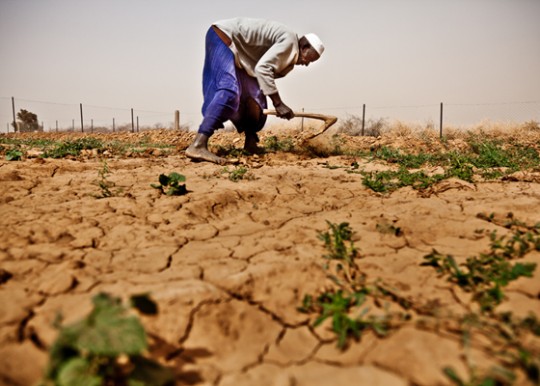Dar es Salaam. As global leaders meet in Belém, Brazil for COP30, smallholder farmers across East Africa say that the promises of climate finance, particularly the much-discussed Loss and Damage Fund, still feel far removed from their daily realities.
Despite fresh commitments announced at the summit, many farmers fear that the money intended to help them withstand worsening climate shocks may never reach them.
Their concerns mirror the warning issued by Elizabeth Nsimadala, President of the East African Farmers Federation (EAFF), which represents 25 million smallholders across the region.
Asked whether African farmers are optimistic about receiving the funds, Elizabeth said that while farmers want to believe the newly approved $250 million (Sh625 billion) for the global Loss and Damage Fund will support them, many remain increasingly doubtful.
“We are indeed hoping to benefit from the fund, but based on the current status of the fund, we aren’t holding our breath,” she said Elizabeth who is also a farmer from Uganda.
“The amount allocated is minuscule compared to the need, so there will be lots of competition. And the mechanisms to access the funding aren’t geared toward getting money to the grassroots.”
Her fears are grounded in experience. Climate finance globally has struggled to reach those who need it most, smallholder farmers who produce up to 70 percent of the region’s food but remain highly vulnerable to droughts, floods, soil degradation and erratic rainfall patterns.
Elizabeth notes that accessing climate money typically requires going through national governments, multilateral development banks or large global climate funds channels that rarely prioritise farmer organisations.
Research by Family Farmers for Climate Action paints a sobering picture. Between 2019 and 2022, the Green Climate Fund (GCF) and the Global Environment Facility (GEF) invested $2.6 billion (Sh6.5 trilion) in agriculture, forestry and fisheries.
Yet only a third of that money supported sustainable agriculture practices relevant to smallholder farmers.
And despite farmer organisations being essential to reaching communities at scale, “no money went directly to farmer organisations,” Elizabeth emphasised.
She argues that this pattern must change if the promise of loss and damage finance is to be meaningful. Evidence from the Intergovernmental Panel on Climate Change (IPCC) and the OECD shows that funds sent directly to communities have the greatest impact.
EAFF’s own fieldwork demonstrates this: after a devastating drought in Djibouti, EAFF helped farmers transition to dairy goats better suited to heat and water scarcity. An initial investment of $75,000 (Sh187.5 million) grew into over $500,000 (Sh1.25 billion) and supported more than 500 farmers.
“These are real examples of how family farmer organisations can scale investment and impact when it comes to climate action,” she said.
“We are tired of empty speeches and commitments. We need to see much more direct funding which is accessible to smallholder family farmers.”

Tanzanian farmers echo the same fears, count losses
Back home, farmers in Shinyanga one of Tanzania’s driest and most climate-exposed regions, are also following COP30 discussions with a mixture of hope and uncertainty.
Many have watched their crop yields decline sharply in the past five years and believe the future of their livelihoods depends on whether climate finance can reach the grassroots.
Kwiyolecha Nkilijiwa, a lentil farmer in Shinyanga, said the community expects COP30 to deliver concrete plans for restoring forests, improving water access and providing drought-tolerant seeds. But like others, he worries that the financing behind these promises may never trickle down to the village level.
“We need strategies that can restore vegetation, which helps bring rainfall, and investments in reliable water systems,” he said.
“But if the money doesn’t reach us, none of these plans will happen.”
For farmers like him, the effects of climate change are no longer abstract projections. Over the last five years, Nkilijiwa has been forced to cut his farmland from 10 hectares to only two due to poor harvests.
Lentils require moist soil, but rainfall has become so unreliable that he now harvests just 7 to 9 bags per hectare down from up to 10 bags previously.
Rice farmers in Shinyanga share a similar story. Kulwa Charles, who grows rice in Isela village in Shinyanga district, said production has dropped significantly because most areas lack irrigation systems.
“Five years ago we harvested up to 65 bags per hectare. Now we get between 50 and 60, sometimes even less,” he said. “If climate finance is real, let it reach us so we can invest in ecological farming and restore our soils.”
Other farmers emphasised the need for education, improved farming practices and alternative energy such as clean cooking gas to reduce deforestation, key elements of adaptation that require consistent funding.
“We need training to know what to plant, and when,” said Charles Ndugulile from Mwamala village in Kwimba district in Shinyanga.
“We also need drought-resistant rice seeds because every year yields are dropping” he adds.

Tanzania’s share of the loss and damage fund
While uncertainty persists on the ground, Tanzania’s climate negotiators maintain that the country stands to benefit from the Loss and Damage Fund.
Dr Richard Muyungi, the President’s Advisor on Environment and Chair of the African Group of Negotiators (AGN), told Tanzanian delegates in Belém that the country could receive up to $20 million (Sh50 billion) for climate-related loss and damage projects.
He explained that $250 million has already been secured for next year’s implementation across beneficiary countries, with Tanzania among those prioritised.
“I want to emphasise that this is not a loan, it is a grant,” he said. “We have been given priority, and we may even have two projects funded if we prepare properly.”
In addition to financing, Tanzania has been selected to host the Santiago Network Centre in 2025.
The centre will coordinate technical support for countries suffering climate-induced loss and damage an opportunity Dr Muyungi believes the country must maximise by forming strong networks with development banks, NGOs and other partners at COP30.
Will COP30 deliver for farmers?
While the Brazil COP30 Presidency has prioritised adaptation—with President Lula calling it the “Adaptation COP”—many farmer organisations say strong declarations are not enough.
Least Developed Countries (LDCs) are pushing for a tripling of adaptation finance to $120 billion (Sh300 trillion) by 2030, but nothing so far guarantees that this money will come as grants or be targeted at smallholders.
“The adaptation finance gap is enormous,” Nsimadala said.
“In 2021, climate finance to East African smallholders was just 0.51 percent of what is needed. Without direct funding, nothing will change.”


